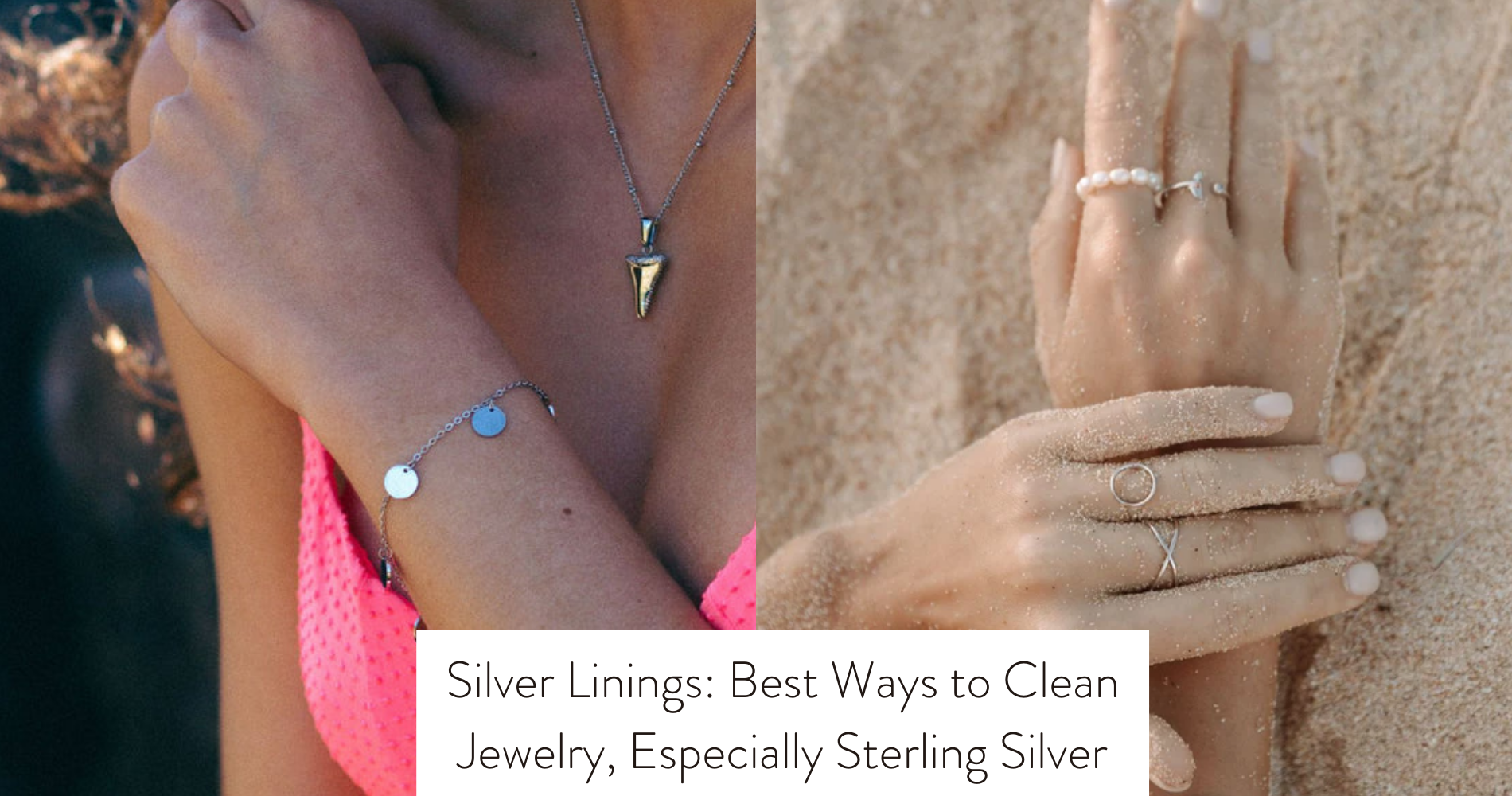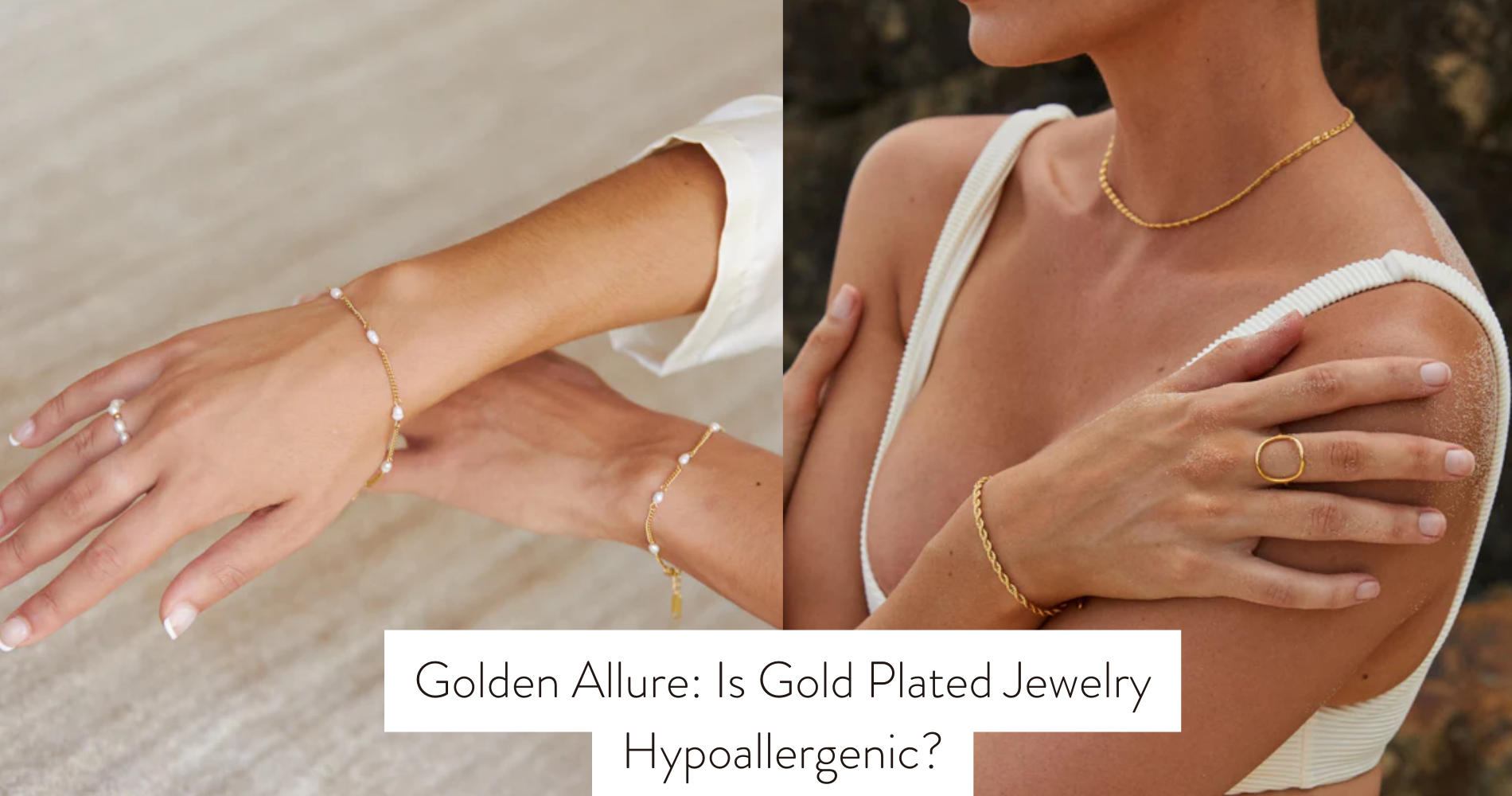
Silver Linings: Best Ways to Clean Jewelry, Especially Sterling Silver
Like a concealed gem, your jewelry, including waterproof pieces, carries emotional significance and brings an element of sophistication to your daily attire.
However, it's common for your cherished items, particularly those made of sterling silver, to diminish in sparkle and sheen as time passes.
Fear not, for in this conversation, we're set to explore the bright sides and unveil the optimal methods for cleaning your jewelry, including waterproof jewelry, to rejuvenate its radiance and allure.
Prepare yourself to learn the secrets that will have your jewelry glistening anew.
Understanding the Importance of Cleaning Jewelry
Keeping your jewelry clean is essential to maintaining its beauty and longevity. While it may be tempting to clean your jewelry at home, there are certain benefits to professional jewelry cleaning that you should consider.
Professional jewelers have the knowledge and expertise to clean your jewelry thoroughly, ensuring that every nook and cranny is free from dirt and grime. They use specialized tools and cleaning agents that are safe for your precious gems and metals, preventing any damage that may occur with DIY cleaning methods.

One of the common mistakes to avoid when cleaning your jewelry is using abrasive materials or harsh chemicals. These can cause scratches, discoloration, or even permanent damage to your jewelry. It's also important to avoid using excessive force when cleaning, as this can loosen or dislodge gemstones or damage delicate settings.
Another benefit of professional jewelry cleaning is the opportunity for inspection. Jewelers can identify any loose stones, worn prongs, or other issues that may require repair. By addressing these issues promptly, you can prevent further damage and ensure the longevity of your jewelry.
Choosing the Right Cleaning Method for Sterling Silver
There are several methods you can use to polish your sterling silver jewelry. One popular option is to use a silver polishing cloth. These cloths are specially designed to remove tarnish and restore the shine to your silver jewelry. Simply rub the cloth gently over the surface of the jewelry, and the tarnish will start to disappear.
Another method you can try is using a silver cleaning solution. This solution is typically a liquid or gel that you can apply to your jewelry using a soft cloth or brush. Be sure to follow the instructions on the bottle and rinse the jewelry thoroughly after cleaning.
If you prefer a more natural approach, you can also make your own cleaning solution using ingredients you may already have at home. A mixture of baking soda and water can be used to create a paste that gently removes tarnish from your sterling silver jewelry. Apply the paste to the jewelry, let it sit for a few minutes, and then rinse it off with warm water.
DIY Cleaning Solutions for Sparkling Jewelry
To achieve sparkling jewelry, consider trying DIY cleaning solutions. Making your own homemade jewelry cleaner can be a cost-effective and efficient way to keep your precious pieces looking their best. However, it's important to avoid common mistakes to ensure the safety and longevity of your jewelry.
One common mistake when using a homemade jewelry cleaner is using abrasive materials. While it may seem like a good idea to scrub away dirt and tarnish, using abrasive substances can actually cause damage to your jewelry, especially delicate pieces. Instead, opt for gentle cleaning agents such as mild dish soap or baking soda mixed with water.
Another mistake to avoid is soaking your jewelry for too long. While it may be tempting to leave your jewelry in the cleaning solution to remove stubborn stains, prolonged exposure can cause discoloration or damage. It's best to follow the recommended cleaning time provided with your homemade cleaner or consult a professional for guidance.
Lastly, make sure to rinse your jewelry thoroughly after cleaning. Leaving any residue from the cleaning solution can lead to a dull appearance or even skin irritation. Rinse your jewelry under running water and pat dry with a soft cloth to ensure a sparkling and safe result.
Cleaning Tips for Different Types of Jewelry
For effective and safe cleaning of your different types of jewelry, consider following these expert tips.
When it comes to cleaning delicate gemstone jewelry, it's important to be gentle and use caution. Avoid using harsh chemicals or abrasive materials that could damage the stones. Instead, opt for a soft cloth or a soft-bristled toothbrush to gently remove dirt and grime. You can also use a mild soap or a jewelry cleaner specifically designed for gemstones. Rinse the jewelry thoroughly and pat it dry with a clean cloth to avoid any water spots.

If you're looking to remove tarnish from gold plated accessories, there are a few simple techniques you can try. First, mix a small amount of mild dish soap with warm water and use a soft cloth to gently clean the surface of the jewelry. Avoid scrubbing too hard, as this can remove the gold plating. Alternatively, you can try using a mixture of baking soda and water to create a paste. Apply the paste to the tarnished areas and gently rub it in with a soft cloth. Rinse the jewelry thoroughly and pat it dry to reveal its original shine.
Maintaining the Shine: Storage and Care Tips
After properly cleaning your jewelry, the next step in maintaining its shine is to store and care for it correctly. One important aspect of jewelry care is preventing tarnish. Tarnish occurs when the metal reacts with moisture, air, and certain chemicals, causing it to lose its shine. To prevent tarnish, it's recommended to store your jewelry in a cool, dry place away from direct sunlight. Additionally, you can use anti-tarnish products, such as anti-tarnish strips or jewelry boxes lined with anti-tarnish fabric, to help slow down the tarnishing process. These products work by absorbing moisture and chemicals that can cause tarnish.
In some cases, professional cleaning services may be necessary to maintain the shine of your jewelry. Professional jewelers have the expertise and specialized equipment to clean your jewelry thoroughly and safely. It's recommended to consider professional cleaning services if your jewelry has intricate designs or gemstones that require delicate handling. Additionally, if you have valuable or sentimental pieces of jewelry, professional cleaning can help restore their shine and beauty. Regular professional cleaning can also help identify any potential issues with your jewelry, such as loose stones or worn-out prongs, allowing you to address them before they become more serious problems.
Ultimately, professional cleaning services can help keep your jewelry in excellent condition and ensure that it continues to shine for years to come.
Frequently Asked Questions
Can I Use Toothpaste to Clean My Sterling Silver Jewelry?
Yes, you can use toothpaste to clean your sterling silver jewelry. However, there are also toothpaste alternatives and DIY silver cleaning solutions that can be just as effective.
How Often Should I Clean My Jewelry?
You should clean your jewelry regularly to keep it looking its best. The frequency of cleaning depends on how often you wear your jewelry. Use the best cleaning solutions for different types of jewelry to ensure their longevity.
Can I Wear My Jewelry in the Shower or While Swimming?
You can wear your jewelry in the shower or while swimming, but there are pros and cons. Water can damage certain types of jewelry. There are alternative methods to clean jewelry without water.
How Do I Remove Tarnish From Gold Jewelry?
To remove tarnish from your gold jewelry, mix warm water with a few drops of mild dish soap. Gently scrub the jewelry with a soft toothbrush, rinse it off, and pat it dry with a clean cloth.
What Should I Do if My Jewelry Gets Scratched?
If your jewelry gets scratched, don't worry! You can easily repair scratched jewelry by using a jewelry polishing cloth or a mixture of baking soda and water. To prevent jewelry scratches, store them separately and avoid wearing during activities that may cause damage.
Conclusion
In conclusion, taking care of your jewelry, especially sterling silver, is essential to maintain its shine and beauty.
By understanding the importance of cleaning, choosing the right method, and using DIY cleaning solutions, you can ensure your jewelry sparkles like new.
Additionally, following specific cleaning tips for different types of jewelry and practicing proper storage and care will help prolong their beauty.
So, don't forget to give your jewelry the attention it deserves and enjoy their silver linings for years to come.




















Leave a comment
This site is protected by hCaptcha and the hCaptcha Privacy Policy and Terms of Service apply.